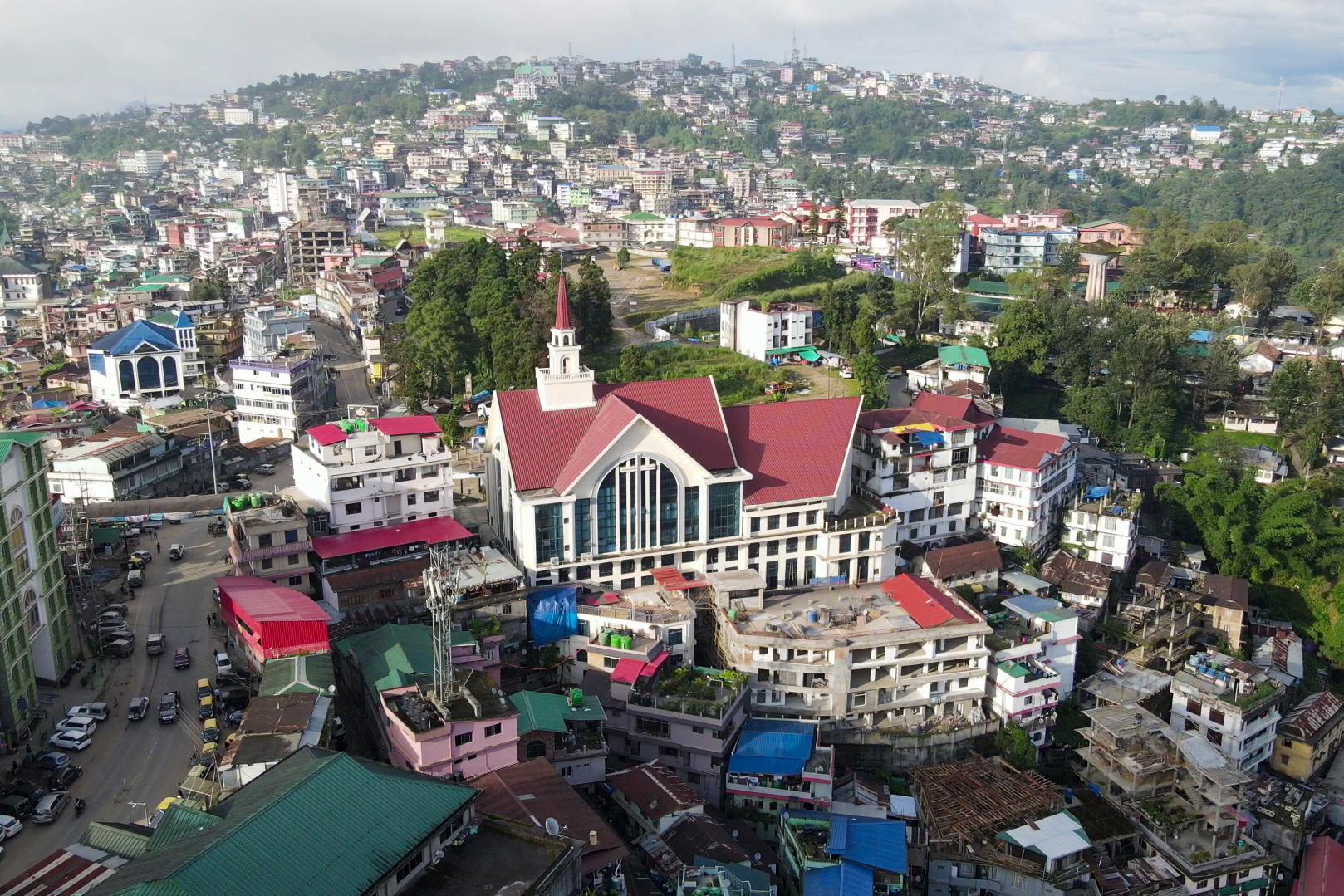|
Mount Japfü
Mount Japfü (, ), is a mountain peak of the Barail Range, located in Kohima District of Nagaland in India, about south of Kohima, the capital of Nagaland. Geography With a summit elevation of , it is the fourth highest mountain in the Indian state of Nagaland and the highest in the Barail Range. The peak of Mount Japfü receives snowfall in the winter months from December to February. Flora Mount Japfü holds the Guinness World Record for the tallest Rhododendron ''Rhododendron'' (; : ''rhododendra'') is a very large genus of about 1,024 species of woody plants in the Ericaceae, heath family (Ericaceae). They can be either evergreen or deciduous. Most species are native to eastern Asia and the Himalayan ... tree in the world. It was discovered in 1993 and recorded a height of . See also * List of mountains in Nagaland References {{reflist Mountains of Nagaland Landforms of Nagaland ... [...More Info...] [...Related Items...] OR: [Wikipedia] [Google] [Baidu] |
List Of Mountains In Nagaland
Nagaland is a part of the complex mountain barrier on the Indo–Myanmar border inhibiting the foothills of the Himalayas. List The following is a list of selected mountains in Nagaland, ordered by height: See also * List of mountains in India Highest major summits in India Other significant mountains * Agastyamalai * Anamudi * Anginda * Apharwat Peak * Bamba Dhura * Bandarpunch * Betlingchhip * Blue Mountain * Brammah * Burphu Dhura * Chandrashila * Changuch * Chaudh ... References External links {{commons category, Mountains of Nagaland ... [...More Info...] [...Related Items...] OR: [Wikipedia] [Google] [Baidu] |
Barail Range
The Barail Range is a tertiary mountain range in Northeast India with an area of approximately 80,000 ha between Brahmaputra and Barak basins stretching from Nagaland & Manipur to the east and Assam & Meghalaya Meghalaya (; "the abode of clouds") is a states and union territories of India, state in northeast India. Its capital is Shillong. Meghalaya was formed on 21 January 1972 by carving out two districts from the Assam: the United Khasi Hills an ... to the west. Highest Peak is Mount Japfü (3,048 m) in Nagaland. Other notable peaks are Laike (1,959 m), Theipibung (1,866m), Mahadevi (1,739m) and Kaukaha (1,736m). References Mountain ranges of India Geography of Assam Geography of Meghalaya Geography of Manipur Geography of Nagaland {{Asia-mountain-stub ... [...More Info...] [...Related Items...] OR: [Wikipedia] [Google] [Baidu] |
Nagaland
Nagaland () is a States and union territories of India, state in the northeast India, north-eastern region of India. It is bordered by the Indian states of Arunachal Pradesh to the north, Assam to the west, Manipur to the south, and the Naga Self-Administered Zone of the Sagaing Region of Myanmar, Myanmar (Burma) to the east. Its capital city is Kohima and its largest city is the twin Chümoukedima–Dimapur. The state has an area of with a population of 1,980,602 as per the 2011 Census of India, making it one of the least populated states in India.Census of India 2011 Govt of India Nagaland consists of 17 administrative districts, inhabited by 17 major tribes along with other sub-tribes. Each tribe is distinct in character from the other in terms of customs, language and dress. It is ... [...More Info...] [...Related Items...] OR: [Wikipedia] [Google] [Baidu] |
Kohima
Kohima (; Tenyidie: Kewhira ()) is the capital of the North East Indian state of Nagaland. With a resident population of almost 100,000, it is the second largest city in the state. Kohima constitutes both a district and a municipality. The municipality covers . The city lies on the foothills of Japfü section of the Barail Range located south of the District () and has an average elevation of . Originally known as Kewhira, Kohima's history goes back to a time when it was a village of the Angami Nagas. It became an urban centre in 1878 when the British Empire established its headquarters of the then Naga Hills District of Assam Province. It officially became the capital after the state of Nagaland was inaugurated in 1963. Kohima was the site of one of the bloodiest battles of World War II. The battle is often referred to as the ''Stalingrad of the East''. In 2013, the British National Army Museum voted the Battle of Kohima to be ''Britain's Greatest Battle''. Etymology ... [...More Info...] [...Related Items...] OR: [Wikipedia] [Google] [Baidu] |
Eastern Mirror
''Eastern Mirror'' is a daily English language newspaper published from Dimapur in the Indian state of Nagaland. Its head office is located at Signal Rio Colony, Dimapur. History On 16 November 2015, ''Eastern Mirror'' along with four other state newspapers—'' Capi'', ''The Morung Express'', '' Nagaland Page'' and '' Tir Yimyim'' published their front page in blank to protest against a diktat from the Assam Rifles. The Assam Rifles had earlier in October ordered the editors to stop covering the rebel group— National Socialist Council of Nagaland - Khaplang (NSCN-K). See also * List of newspapers in Nagaland References External links Official website on Instagram
Instagram is an Americ ...
[...More Info...] [...Related Items...] OR: [Wikipedia] [Google] [Baidu] |
East Mojo
East is one of the four cardinal directions or points of the compass. It is the opposite direction from west and is the direction from which the Sun rises on the Earth. Etymology As in other languages, the word is formed from the fact that east is the direction where the Sun rises: ''east'' comes from Middle English ''est'', from Old English ''ēast'', which itself comes from the Proto-Germanic *''aus-to-'' or *''austra-'' "east, toward the sunrise", from Proto-Indo-European *aus- "to shine," or "dawn", cognate with Old High German ''*ōstar'' "to the east", Latin ''aurora'' 'dawn', and Greek ''ēōs'' 'dawn, east'. Examples of the same formation in other languages include Latin oriens 'east, sunrise' from orior 'to rise, to originate', Greek ανατολή anatolé 'east' from ἀνατέλλω 'to rise' and Hebrew מִזְרָח mizraḥ 'east' from זָרַח zaraḥ 'to rise, to shine'. ''Ēostre'', a Germanic goddess of dawn, might have been a personification of both da ... [...More Info...] [...Related Items...] OR: [Wikipedia] [Google] [Baidu] |
Guinness World Record
''Guinness World Records'', known from its inception in 1955 until 1999 as ''The Guinness Book of Records'' and in previous United States editions as ''The Guinness Book of World Records'', is a British reference book published annually, listing world records both of human achievements and the extremes of the natural world. Sir Hugh Beaver created the concept, and twin brothers Norris and Ross McWhirter co-founded the book in London in August 1955. The first edition topped the bestseller list in the United Kingdom by Christmas 1955. The following year the book was launched internationally, and as of the 2025 edition, it is now in its 70th year of publication, published in 100 countries and 40 languages, and maintains over 53,000 records in its database. The international franchise has extended beyond print to include television series and museums. The popularity of the franchise has resulted in ''Guinness World Records'' becoming the primary international source for catalo ... [...More Info...] [...Related Items...] OR: [Wikipedia] [Google] [Baidu] |
Rhododendron Arboreum
''Rhododendron arboreum'', the tree rhododendron, is an evergreen shrub or small tree with a showy display of bright red flowers. It is found in Bhutan, China, India, Myanmar, Nepal, Sri Lanka, Pakistan and Thailand. It is the national flower of Nepal. In India it is the state tree of Uttarakhand and state flower of Nagaland. Description Its specific epithet means "tending to be woody or growing in a tree-like form". It has been recorded as reaching heights of , though it is more usually tall and broad. This plant holds the Guinness Record for the World's Largest Rhododendron. The tree discovered in 1993 at Mount Japfü in the Kohima District of Nagaland, India, holds the Guinness Record for the tallest Rhododendron at . In sharp contrast to this, the New Guinean epiphytic species '' Rhododendron caespitosum'' never exceeds in height. In early- and mid-spring, trusses of 15–20 bell-shaped flowers, wide and long are produced in red, pink or white. They have black nectar ... [...More Info...] [...Related Items...] OR: [Wikipedia] [Google] [Baidu] |
Guinness World Records
''Guinness World Records'', known from its inception in 1955 until 1999 as ''The Guinness Book of Records'' and in previous United States editions as ''The Guinness Book of World Records'', is a British reference book published annually, listing world records both of human achievements and the extremes of the natural world. Sir Hugh Beaver created the concept, and twin brothers Norris and Ross McWhirter co-founded the book in London in August 1955. The first edition topped the bestseller list in the United Kingdom by Christmas 1955. The following year the book was launched internationally, and as of the 2025 edition, it is now in its 70th year of publication, published in 100 countries and 40 languages, and maintains over 53,000 records in its database. The international franchise has extended beyond print to include television series and museums. The popularity of the franchise has resulted in ''Guinness World Records'' becoming the primary international source for cata ... [...More Info...] [...Related Items...] OR: [Wikipedia] [Google] [Baidu] |
Mountains Of Nagaland
A mountain is an elevated portion of the Earth's crust, generally with steep sides that show significant exposed bedrock. Although definitions vary, a mountain may differ from a plateau in having a limited summit area, and is usually higher than a hill, typically rising at least above the surrounding land. A few mountains are isolated summits, but most occur in mountain ranges. Mountains are formed through tectonic forces, erosion, or volcanism, which act on time scales of up to tens of millions of years. Once mountain building ceases, mountains are slowly leveled through the action of weathering, through slumping and other forms of mass wasting, as well as through erosion by rivers and glaciers. High elevations on mountains produce colder climates than at sea level at similar latitude. These colder climates strongly affect the ecosystems of mountains: different elevations have different plants and animals. Because of the less hospitable terrain and climate, mountains te ... [...More Info...] [...Related Items...] OR: [Wikipedia] [Google] [Baidu] |





